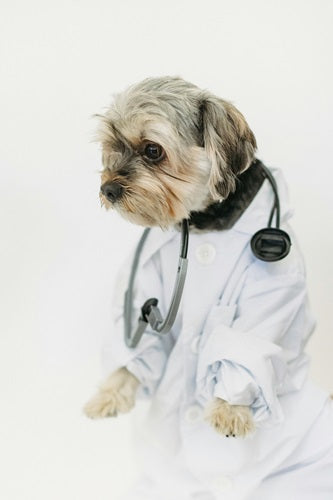Allergies In Dogs And What To Do About It
A dog having allergies is probably unheard of but it is, in fact, true. On close observation of your dog, you can learn to recognise signs of allergy. Just like in humans, allergies in dogs can take a deadly turn and hence neglecting them can be risky. Proper and timely care should be provided to manage allergies. Work with your vet to help your pet be itch-free, healthy and comfortable. Lets learn about allergies in dogs and how they can be treated.
Allergies in dogs
Unfortunately, allergies are quite common in dogs, irrespective of the breed. Most allergies kick in after the dog is six months old. There are a variety of things which can trigger an allergic reaction for your dog. To understand your allergies, you must understand the types of allergies and their symptoms. Symptoms of allergies in your dog may include constant itching, hives, swelling around ears, mouth, eyelid or earflaps, red inflamed skin, diarrhea, vomiting, sneezing, chronic ear infections, itchy runny eyes, excessive licking or drooling. Let’s learn in detail the types of allergies dog’s could face:
Types of allergies in dogs
-
Flea Dermatitis:
This skin disease occurs when a flea bites into your dog’s skin. The compounds in the saliva of the flea get absorbed into the dog and trigger the dog’s immune system. This causes an inflammatory reaction in certain sensitive animals. Some dogs may have an immediate reaction to a flea bite, within a short span of even up to fifteen minutes, while others may have a delayed reaction that can take up to 24- 48 hours. Even a single flea bite can trigger an itch, leading to an irritating rash. Constant itchiness that results in hair loss from the middle of your dog’s back to his tail base is mainly due to flea allergy dermatitis.
Treatment: Different types of treatments have been created to help your dog live free of fleas. Oral medications are the quickest to rid your dog of fleas.The fleas can die within an hour of feeding the medication. After an hour, ensure that you give your dog a bath with specially formulated flea shampoos to get rid of all the dead fleas. Treating your pet is only solving half the problem. You must make sure his surroundings are free of fleas as well. Contact an exterminator to ensure complete eradication of fleas from your environment.
-
Atopic Dermatitis:
Atopic dermatitis is an inflammatory, chronic skin disease associated with allergies. This is the second most common allergic skin disease in dogs, first being flea dermatitis. Our environment consists of many allergens that may trigger an allergic reaction, including pollen and other plant materials, dust, dust mites, mold, fleas, shampoo, cleaning products, and even carpet fibers. Symptoms may occur seasonally or throughout the year. Skin irritation is one of the main symptoms, often occurring around paws and ears but can also affect the entire body. You may see your dog constantly licking, scratching or chewing a particular area of his body, making it red or swollen. Additionally, when your dog constantly chews a patch of skin, it can cause hair loss from that particular area. Hence, you need to pay attention to your dog’s actions to point out any unusual indication of a medical problem.
Treatment: The line of treatment to be administered will depend on what is causing your pet’s allergic reaction. Visit your vet for the proper treatment. If the reaction is due to atopy, a genetic disposition to an allergic reaction, your vet may recommend hyposensitization therapy. He might also recommend immunomodulatory medications. These are available either as a daily pill or an injection given every 4-10 weeks. More often than not, antibiotics or antifungal medicines are also required to treat the skin infections that result from allergies.
-
Respiratory allergies:
Respiratory allergies in dogs are similar to what humans experience. Your dog’s respiratory system is divided into two parts- the upper and lower respiratory tract. The respiratory allergies in dogs occur only on the upper respiratory tract which includes nose, sinuses, throats and trachea. These allergies are usually triggered by an inhaled allergen and main symptoms will be a runny nose, sneezing, and coughing. You may also see eye discharge, wheezing, and panting. He may even snore due to the inflammation and appear to be more tired than usual. Even though respiratory allergies are not common in dogs, it cannot be ruled out without a vet’s consultation.
Treatment: For dogs with respiratory allergy symptoms, such as allergic bronchitis, some of the same treatments as for atopic dermatitis can be helpful. Your veterinarian may also prescribe a cough suppressant if your dog is coughing a lot. If your dog is suffering from respiratory allergies, it is recommended that you limit the amount of time he spends outdoors when pollen is most active.
-
Food allergies:
What people mostly experience when their dog has a reaction to a particular food is actually known as food sensitivity or intolerance. True food allergies are much less frequent than food sensitivities. Food allergies display a more immediate immunological response. In food allergies, a food protein triggers an adverse immune response, which then causes cells in the body to release histamines or compounds that lead to itching and many other allergic signs. Food allergies in dogs can be very serious and cause not only digestive problems like vomiting and diarrhea, but also skin issues, and even behavioral problems.
Treatment- Dog’s food allergy treatment requires us to identify the foods your dog is allergic to and avoid feeding those to him. In the case of a food allergy, medication from your vet would be required to treat the allergy. Vets could also help to identify the possible allergens in your dog’s food which he might be allergic to. He may also prepare a diet plan to avoid frequent occurrences of these allergies. Most allergies do not have a permanent cure but medication proves to be very helpful.
Being aware of the fact that dogs get allergic just like humans, allows you to provide your dog the appropriate care it requires. Providing your dog with clean surroundings and keeping a close eye on him will prove to be helpful but allergies come uninvited and unannounced. Being aware of the types of allergies, the symptoms and the possible lines of treatment can help you keep your pet healthy and safe even during an allergic reaction.








